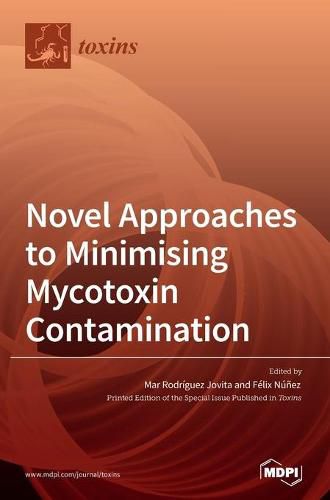Readings Newsletter
Become a Readings Member to make your shopping experience even easier.
Sign in or sign up for free!
You’re not far away from qualifying for FREE standard shipping within Australia
You’ve qualified for FREE standard shipping within Australia
The cart is loading…






This title is printed to order. This book may have been self-published. If so, we cannot guarantee the quality of the content. In the main most books will have gone through the editing process however some may not. We therefore suggest that you be aware of this before ordering this book. If in doubt check either the author or publisher’s details as we are unable to accept any returns unless they are faulty. Please contact us if you have any questions.
Contamination of foods and agricultural commodities by various types of toxigenic fungi is a concerning issue for human and animal health. Moulds naturally present in foods can produce mycotoxins and contaminate foodstuffs under favourable conditions of temperature, relative humidity, pH, and nutrient availability. Mycotoxins are, in general, stable molecules that are difficult to remove from foods once they have been produced. Therefore, the prevention of mycotoxin contamination is one of the main goals of the agriculture and food industries. Chemical control or decontamination techniques may be quite efficient; however, the more sustainable and restricted use of fungicides, the lack of efficiency in some foods, and the consumer demand for chemical-residue-free foods require new approaches to control this hazard. Therefore, food safety demands continued research efforts for exploring new strategies to reduce mycotoxin contamination. This Special Issue contains original contributions and reviews that advance the knowledge about the most current promising approaches to minimize mycotoxin contamination, including biological control agents, phytochemical antifungal compounds, enzyme detoxification, and the use of novel technologies.
$9.00 standard shipping within Australia
FREE standard shipping within Australia for orders over $100.00
Express & International shipping calculated at checkout
This title is printed to order. This book may have been self-published. If so, we cannot guarantee the quality of the content. In the main most books will have gone through the editing process however some may not. We therefore suggest that you be aware of this before ordering this book. If in doubt check either the author or publisher’s details as we are unable to accept any returns unless they are faulty. Please contact us if you have any questions.
Contamination of foods and agricultural commodities by various types of toxigenic fungi is a concerning issue for human and animal health. Moulds naturally present in foods can produce mycotoxins and contaminate foodstuffs under favourable conditions of temperature, relative humidity, pH, and nutrient availability. Mycotoxins are, in general, stable molecules that are difficult to remove from foods once they have been produced. Therefore, the prevention of mycotoxin contamination is one of the main goals of the agriculture and food industries. Chemical control or decontamination techniques may be quite efficient; however, the more sustainable and restricted use of fungicides, the lack of efficiency in some foods, and the consumer demand for chemical-residue-free foods require new approaches to control this hazard. Therefore, food safety demands continued research efforts for exploring new strategies to reduce mycotoxin contamination. This Special Issue contains original contributions and reviews that advance the knowledge about the most current promising approaches to minimize mycotoxin contamination, including biological control agents, phytochemical antifungal compounds, enzyme detoxification, and the use of novel technologies.